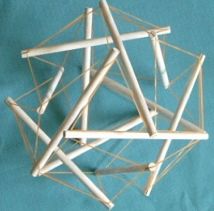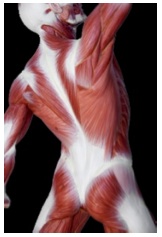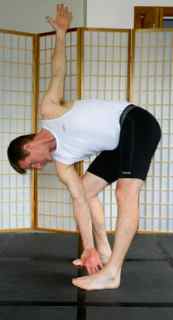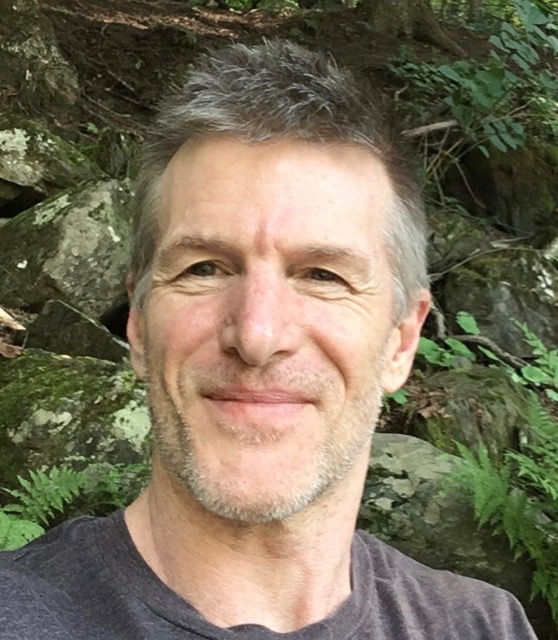Understanding Lower Back Pain
Four Essential realities about the body
Over the past thirty years treating lower back pain, I've always made it a practice to educate my clients about what I'm doing and why.
My reason for this is simple:
I've witnessed again and again that when clients become active agents in their own recovery the likelihood of lasting pain relief increases dramatically.
This is why I encourage you and every visitor to this site to start here...
Since I cannot personally evaluate and treat visitors to this site (people visit this site from all over the world), I've created videos of detailed movement therapy, stretching, and strengthening routines designed to relieve many types of back pain.
But in order for you to choose the most appropriate routines for your particular issue it's important for you to understand a few key concepts and to possess of deeper understanding of your body as a whole.
Essential #1
The Body is a Tensegrity Structure

The term tensegrity was originally coined by philosopher Buckminster Fuller as an architectural term combining the words "tension" and "integrity." Looking at the structure, can you see how if you touched one part of it, the whole structure would be affected?
Our bodies are like that. Our bodies are, in fact, tensegrity structures.
What this means is that we must stop thinking of our back pain as an isolated issue in our backs and more as a holistic issue involving our entire bodies.
Essential #2
The body is interconnected from head to toe
by a fascial web.
Fascia is the connective tissue that both surrounds every muscle like a glove and also interpenetrates every muscle, bone, nerve, artery and vein as well as all of our internal organs, the brain and the spinal cord.
The body's fascia forms a continuous web from head to foot without interruption. In this way you can begin to see that each part of the body is connected to every other part by the fascia, like the yarn in a sweater.
One of my favorite quotes related to the anatomy of the body is from George E. Snyder, Professor of Anatomy at Kirksville College of Osteopathy and Surgery. He remarks that,
 |
"The connective tissues not only bind the various parts of the
body but, in a broader sense, connect the numerous branches of medicine.” Job's Body by Deane Juhan |
Essential #3
The fascia can tighten, shorten, and also become adhered between muscle sheaths.
In the following short video anatomist Gil Hedley shows us how the
fascial sheaths of neighboring muscles can get stuck together. Gil has a
humorous pet name for the component of fascia that can cause adhesions.
He calls it "the fuzz."
The "Fuzz" Speech
PLEASE NOTE: The following video contains images of cadaver anatomy which some individuals may find "a bit graphic" (as one of my friends deemed it).
The potential of adhered "fuzz" to transmit strain patterns from one part of the body to another cannot be overstated. This is why it's crucial as we get older to maintain adequate movement.
All this helps us to see two critical facts…
• A huge percentage of lower back pain occurs as a result of an interplay of forces throughout the body and…
• A huge number of back pain sufferers can achieve lasting relief by committing to what I call the single most important self-healing strategy available...
Improving Overall Flexibility
Essential #4
Improving overall flexibility is the single most powerful self-treatment available for relieving lower back pain.
|
This is why the benefits of stretching cannot be encouraged too strongly in dealing with lower back pain. Improving your body's overall flexibility — not just the muscles of you back but your entire body — is the heart and soul of lasting back pain relief. That's why I created the Stretching Blueprint for Pain Relief and Better Flexibility, a only self-paced online course unlike any other... |
 |
Stretching Blueprint for Pain Relief and Better Flexibility
|
Stephen O'Dwyer, cnmt
Neuromuscular Therapist & Pain Relief Researcher
FOUNDERLower Back Pain Answers |

|
CURRENT COURSES POSTURAL BLUEPRINT FOR CORRECTING PELVIC TORSION: The Complete Guide To Restoring Pelvic Balance (2022) STRETCHING BLUEPRINT FOR PAIN RELIEF & BETTER FLEXIBILITY: The Complete Guide to Pain-Free Muscles Using Active Isolated Stretching (2020) HEALING THE HIDDEN ROOT OF PAIN: Self-Treatment for Iliopsoas Syndrome (2013) FREE MINI COURSE: Introduction to Active Isolated Stretching |

